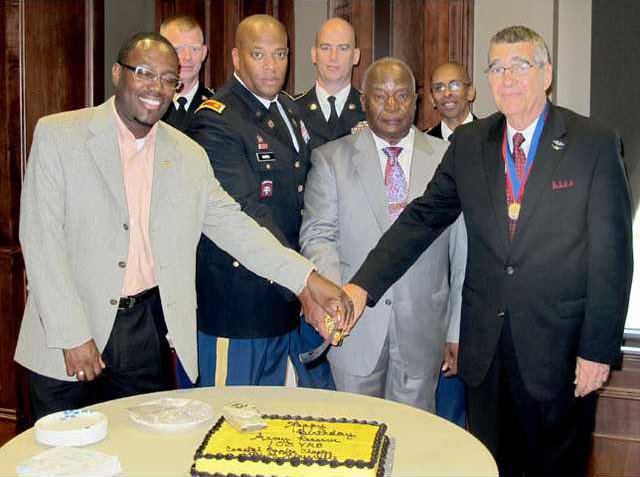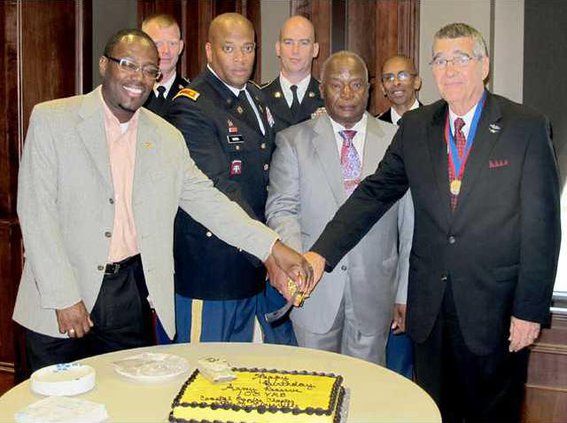The U.S. Army Reserve will celebrate its 105th birthday April 23. To honor the Reserve and its support for the total force and the nation, Mayor Jim Thomas signed a proclamation Wednesday morning, designating April 23 as Army Reserve Day.
The ceremony was organized by Georgia Army Reserve Ambassador Luis Carreras and Joe Ford, president of the Hinesville chapter of the Association of the U.S. Army. In addition to the mayor, it was attended by four local Reservists — Maj. Ivy Harris, Master Sgt. Kent Smith, Sgt. 1st Class Robert Evans and Sgt. 1st Class Christopher Kight.
“The Army Reserve makes up 20 percent of the Army’s organized units and provides one-half of the Army’s combat support and one-fourth of its mobilization base expansion capabilities,” said Thomas, who noted that national leaders realized in 1908 a “reservoir” of trained medical officers in a reserve status was needed to supplement the active Army in a time of war.
The Medical Reserve Corps was established that year. In 1916, Congress passed the National Defense Act, which created the Officers’ Reserve Corps, Enlisted Reserve Corps and Reserve Officers’ Training Corps, he said. These organizations later were renamed the Organized Reserve Corps, forerunner of the Army Reserve.
According to a news release from Army Reserve Public Affairs Specialist Jamal B. Beck, today’s Reserve consists of nearly 201,000 “citizen soldiers” representing 148 military occupational specialties. Nearly 12,000 Reservists currently are serving overseas as part of Joint Force operations. Since Sept. 11, 2001, more than 250,000 Reservists have served in support of Operation Iraqi Freedom, Operation Enduring Freedom and Operation Noble Eagle, he said.
Beck said the Army Reserve specifically is designed to manage critical, special capabilities too expensive to maintain with active-duty units, including theater-level transportation and sustainment. He added that the Reserve also manages career fields that are in high demand in the civilian section, such as medical, legal, engineers and cyber technology.
Carreras said it is important that the nation maintains a large, well-trained Army Reserve, particularly in light of current budget cuts that are downsizing the active force by more than 80,000 soldiers. He said it would a shame to allow all that combat experience and training to go to waste and hopes leaders will consider increasing the size and budget of the Army Reserve so that a large number of soldiers leaving the active Army will be able to go into the Reserve.
Another issue important to Carreras is a new Army program called Soldier for Life. According to the Army’s website for the program, Soldier for Life gives Army, government and community leaders support to facilitate the successful re-integration of soldiers, veterans and their families into their communities. The goal is to keep the Army strong by instilling Army values into the community while enabling soldiers to become leaders.
“This program is sort of like the Marine Corps idea of ‘once a Marine, always a Marine,’” Carreras said. “The soldier deserves the support of the community and the nation from the day he or she puts on that uniform until the day he’s laid to rest.”
Reserves mark its 105th birthday


Sign up for our e-newsletters